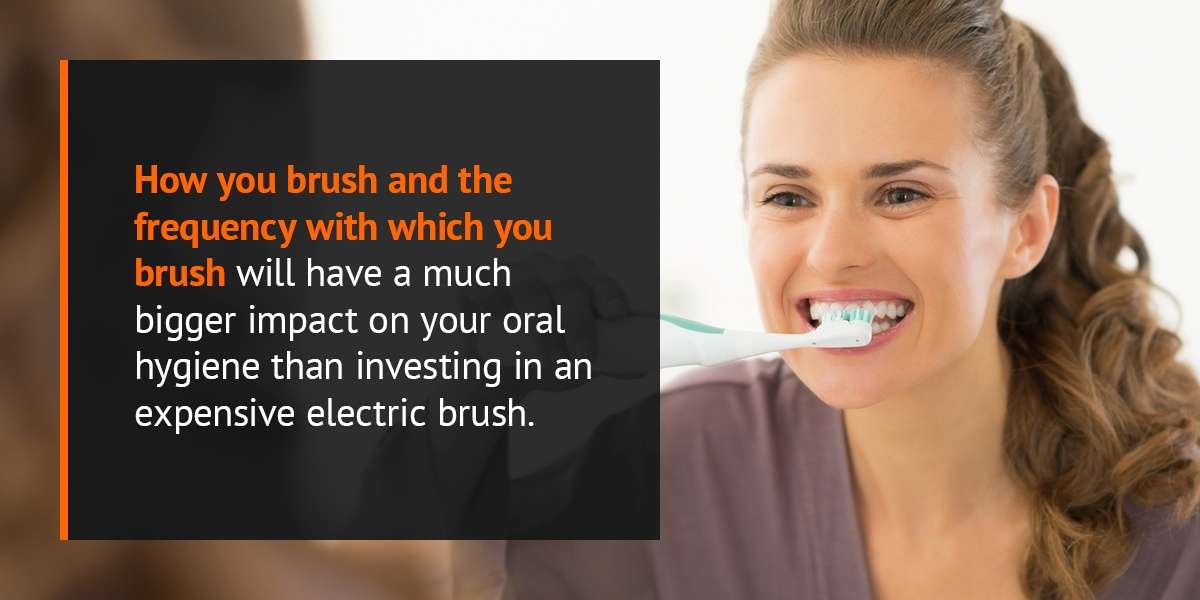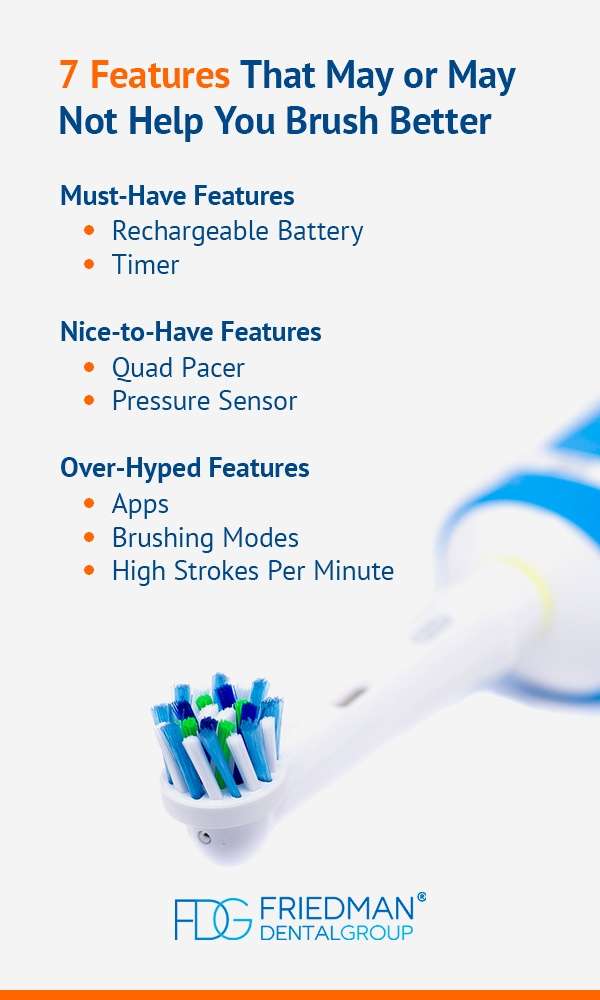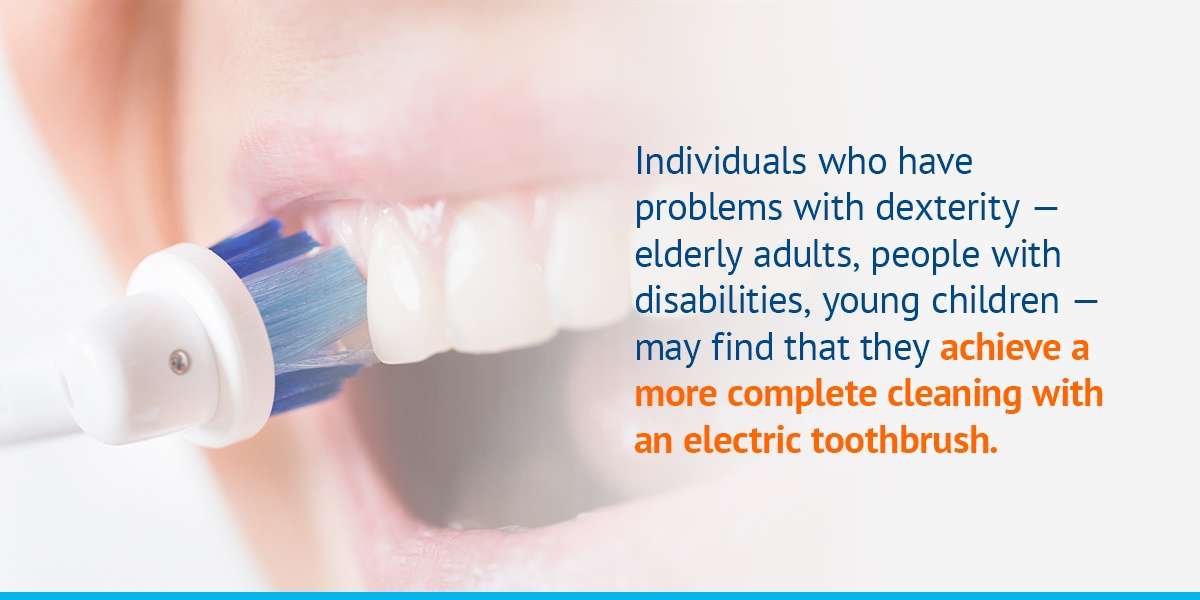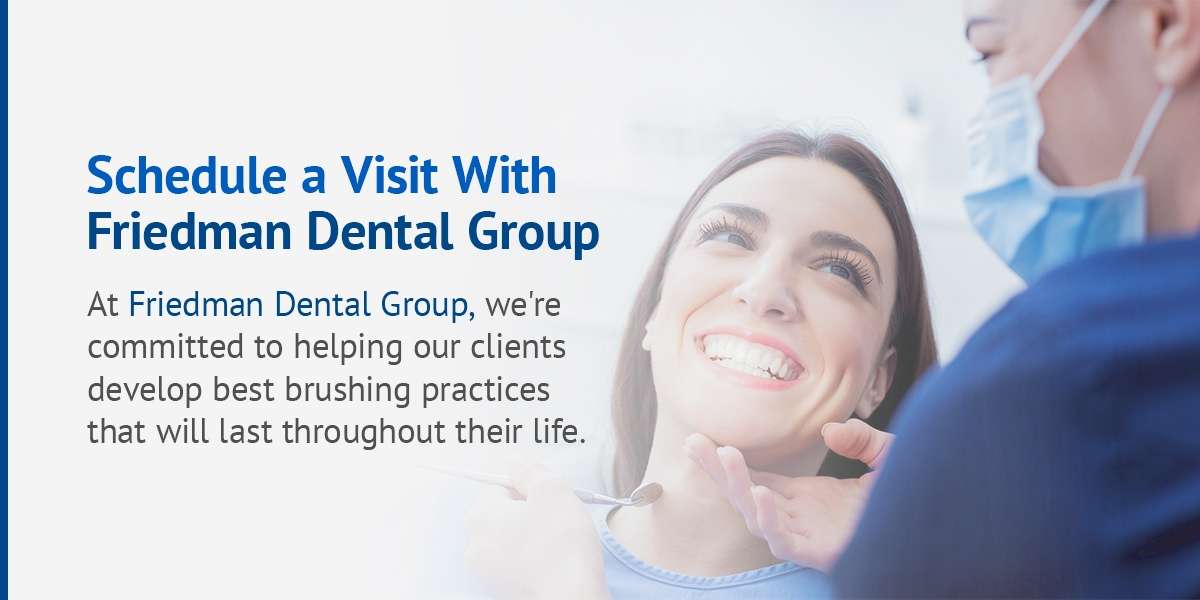Electric toothbrushes provide users with several important benefits. These wonders of modern dentistry are better equipped to reach those hard-to-reach spaces in the mouth, and they can help reduce the risk of gum disease, cavities, and a host of other dental problems. Besides that, electric toothbrushes make it easier to brush for two minutes twice a day as recommended by the American Dental Association (ADA).
Proper dental hygiene is essential for healthy teeth and gums. Manual toothbrushes are certainly capable of keeping your mouth clean. But, electric toothbrushes have oscillating, vibrating, and battery-powered bristles that make brushing easier and more effective at removing plaque.
Many people are ditching their manual toothbrushes and making the switch to electric toothbrushes. Are you ready to make the switch? Filter the noise of manufacturer promises and consider these dentist-approved electric toothbrushes that are actually worthwhile:
Top Dentist-Recommended Electric Toothbrushes
According to the ADA, electric and manual toothbrushes are effective for removing plaque from the surface of your teeth. But many people prefer electric toothbrushes because they’re easier to use. Individuals who have problems with dexterity — elderly adults, people with disabilities, young children — may find that they achieve a more complete cleaning with an electric toothbrush because it can reach places in their mouth that their own hands cannot access guiding a manual toothbrush. Children or adults who have braces also find that electric toothbrushes are often easier to use.
While the ADA does not endorse electric toothbrushes as more effective than a manual brush, they do have a list of electric options that have received the “ADA Seal of Acceptance.” This seal means that the ADA has evaluated the toothbrush and determined that it meets their rigorous standards for dental safety and cleanliness. This list includes a variety of options, including ones that use different types of head movement to clean teeth.
While the ADA’s list can be helpful, it’s also challenging to navigate all the different options, especially if you’re on a budget or new to using an electric toothbrush. Before you purchase one, take a few minutes to decide what’s most important to you. Some patients prefer to purchase the product with the best reviews. Others prefer to stay within a set budget. Still others want to ensure that they’re purchasing a toothbrush with a lot of beneficial features, such as a timer or multiple cleaning modes. Knowing what you want, and how much you are willing to spend, is the first step toward finding the right electric toothbrush for you.
Best Overall Electric Toothbrush: Philips Sonicare 2 Series
When researching the Philips Sonicare 2 Series, the first thing you’ll notice is that there are three models to choose from. The only difference between the three options is the color. Color aside, each of these models provides you with a rounded, evenly weighted grip. The design is basic, meaning there aren’t any fancy features to learn or lots of buttons to push. The on-off button is located on the front of the brush, but once you turn the brush on, you’ll only need the “off” button if you finish before the recommended two minutes is complete. This is because the Philips Sonicare 2 Series is designed with a built-in timer.
The built-in timer is programmed on the premise that the mouth can be broken up into four quadrants — upper right, upper left, lower right, lower left. After 30 seconds, the brush briefly pauses, and a tone sounds, indicating that the first quadrant of the mouth has been thoroughly brushed and it’s time to move on to the next one. The brush then turns itself off when two minutes have passed.
This brush is designed to provide the user with 31,000 strokes per minute. Its simple design and its power allow the toothbrush to do most of the work for you. All you have to do is turn it on and gently guide it through your mouth.
To keep the Philips Sonicare 2 brush in mint condition, you should replace its removable brush head every three months. This brush is designed to be compatible with the other brushes in Sonicare’s line of snap-on brush heads, which means that users who have sensitive teeth or gums can opt for a brush head that will keep them comfortable and protect their mouths.
Best Budget Electric Toothbrush: Oral-B Pro 1000
Electric toothbrushes do cost more than manual toothbrushes, which can make it difficult for some people to make the switch. If you’re interested in trying an electric toothbrush but don’t want to spend a lot, then the Oral-B Pro 1000 is a great option. The Oral-B Pro 1000 cleans as well as the Philips Sonicare 2 Series, but since it’s an oscillating brush rather than a sonic one, it vibrates more slowly. Some patients, especially ones who haven’t used electric toothbrushes, find that the slower vibrations are more comfortable.
Similar to the Philips Sonicare 2, this toothbrush has only one cleaning mode, and it comes with a timer to ensure that you devote plenty of time to each part of your mouth. One word of caution: some people with sensitive teeth and gums find that the brush heads on this model aren’t as gentle, so if you’re prone to oral sensitivities, this may not be the best choice in the long-term.
Best Feature-Packed Toothbrush: Philips Sonicare DiamondClean
There’s a lot to love about the Philips Sonicare DiamondClean. In addition to what you’d find in other Philips Sonicare products, the DiamondClean comes with three different brush heads. Each of the three heads is designed to help tackle those hard-to-reach areas of your mouth. Luckily, they also come with a travel case so you can keep them together wherever you brush.
You can also sync the DiamondClean with your phone or tablet to receive automated progress reports, as well as feedback on your brushing. Sensors located in the brush heads can detect places you’re brushing too hard to help prevent damage. The app shows you exactly where you’re running into problems — and how to improve — using a 3-D simulation of your teeth.
Best Electric Toothbrush for Kids: Sonicare For Kids Sonic Electric Toothbrush
Children under 3 years of age should not use an electric toothbrush, but if your child is old enough, then teaching them to use an electronic toothbrush can have a positive — and long-lasting — impact on their oral hygiene.
How does an electric toothbrush benefit a child? Children are notorious for skipping over the surfaces in their mouth, leaving molars and other hard-to-reach teeth without a thorough brushing. Electric toothbrushes cover more ground because they do most of the work for your child, resulting in a more efficient clean. Besides that, children love gadgets! Children who are reluctant to brush their teeth may become excited at the idea of using an electric toothbrush.
The Sonicare For Kids Sonic Electric Toothbrush can help your child look forward to brushing brush their teeth. Like many of its adult counterparts, this electric toothbrush comes with a timer. But this timer can work in reverse. It helps children count up to two minutes, gradually teaching them how to brush each part of their mouth for the appropriate amount of time. Users of this brush can also take advantage of Sonicare’s free app for kids that tracks and rewards their brushing progress.

How We Chose the Best Electric Toothbrush
The price for an electric toothbrush ranges widely. You can find ones for as low as $10 — just be sure to stock up on replacement batteries — or you can spend over $200 for one that has all the bells and whistles. So how did we come up with our recommendations?
The truth is that a toothbrush — manual or electric — is only as effective as the person using it. In other words, how you brush and the frequency with which you brush will have a much bigger impact on your oral hygiene than investing in an expensive electric brush. However, over time, we’ve noticed that certain electric toothbrushes are simply more effective than others. When evaluating at how these toothbrushes compare with one another, there are a few things we’re looking for.
Electric Toothbrush Motion: Oscillating vs. Sonic
Oscillating toothbrushes feature smaller round heads that rotate back and forth, while sonic toothbrushes have longer heads that vibrate.
Oscillating toothbrushes average 7,500 brushstrokes to 8,000 brushstrokes per minute. Because of their smaller head size, these electric toothbrushes offer a more precise clean without the “teeth-tickling” sensation and pressure often associated with sonic brushes. Sonic toothbrushes average up to 40,000 strokes per minute. And, their longer heads allow users to thoroughly brush hard-to-reach places in the back of the mouth.
Both oscillating and sonic toothbrushes are effective, so there isn’t a definitive answer as to which option is better. If you have sensitive teeth, you may prefer the gentler brushing of oscillating toothbrushes. Or, if your dentist recommends a more thorough brushing technique, then a sonic toothbrush may work well for you.
We Compared the Big Brands to Industry Disruptors
In the electric toothbrush market, two brands dominate: Oral-B and Philips Sonicare. We studied all of the best-of lists we could find, as well as consumer reviews from various online stores, to determine each brand’s highest-rated toothbrushes.
We looked at various brushes, different features and a range of price points. We considered the most suitable options for young children, lesser-known brands and aspiring industry disrupters. So, even though Oral-B and Philips Sonicare dominate the toothbrush market, we created an even playing field when locating the best electric toothbrush.

7 Features That May or May Not Help You Brush Better
Choosing the right electric toothbrush really comes down to your own personal preference. Do you plan to focus on improved overall hygiene? Plaque control? Whiter teeth? The answer to that question can help you narrow your focus to the right brush for you.
There are a lot of electric toothbrushes on the market, but how do you know which features are a must-have and what features are just a nice little extra?
Must-Have Features
No matter which electric toothbrush you buy, make sure it has a:
1. Rechargeable Battery
Some of the inexpensive electric toothbrushes out there rely on batteries to keep going, but if you’re committed to brushing with an electric brush for the long haul, then it’s important to invest in one that can be recharged. This saves you from the expense of buying batteries all the time, plus a rechargeable battery holds a charge for a long time. In fact, most of the rechargeable electric toothbrush models on the market today only need to be charged every two weeks.
2. Timer
You might think you’re brushing for two minutes — or more — but the truth is that many people overestimate the amount of time they spend with their toothbrush. The timer feature on today’s top models is an important feature because it improves brushing performance and overall oral hygiene.
Nice-to-Have Features
Aside from the must-have features, some convenient features that may influence your decision are:
3. Quad Pacer
This is the technical name for the feature that divides the two minutes of brushing time into four thirty-second intervals. The quad pacer divides the mouth into four quadrants, then relies on auditory signals to tell you when it’s time to move on to the next section of your mouth. This is a great feature if you’re looking to improve the effectiveness of your brushing, but it’s not a must-have.
4. Pressure Sensor
Brushing too hard can result in bleeding or sore gums. Over time, it can also contribute to gum recession. Some electric toothbrush models have a built-in pressure sensor designed to alert the user if they’re putting too much pressure on the brush, but these tend to be inconsistent and don’t always register pressure the same way. In other words, one model may alert you that your brushing is too intense, but another model might not register excessive pressure until much more is placed on the brush — and the gums. Although this feature is a good idea for protecting teeth and gums, its inconsistency across the models makes it a less desirable feature.
Over-Hyped Features
Although a step-up from manual toothbrushes, some over-hyped electric toothbrush features to stay wary of include:
5. Apps
Sure, it’s fun to be able to log onto your smartphone or tablet to see the places you missed when you brushed, but it’s not really necessary — or beneficial. Diligently following the two-minute rule and maintaining a consistent brushing routine is much more effective than watching a model of your mouth.
The one exception to this is the kids’ electric toothbrushes. The apps that connect with kids’ toothbrushes provide a great way for children to learn how to brush their teeth and encourage life-long habits that will help them to maintain good oral hygiene.
6. Brushing Modes
Buying a toothbrush that helps whiten teeth or massage the gums sounds appealing, but developing a consistent and thorough brushing routine will most likely provide you with the same results. If you’re concerned about the color or condition of your teeth, talk with your dentist about ways you can improve your brushing routine and see results.
7. High Strokes Per Minute
About 8,000 strokes per minute is enough to effectively remove plaque from teeth. But many sonic electric brushes on the market today offer up to 40,000 brushstrokes. While this may sound like a better option, the truth is that those extra strokes aren’t doing a whole lot to help your gums and teeth.
Friedman Dental Group
At Friedman Dental Group, we’re committed to helping our clients develop best brushing practices that will last throughout their life. There are benefits to investing in an electric toothbrush, but we believe that the best thing you can do to take care of your teeth is brush regularly, brush well, and visit the dentist twice a year.
Contact us to schedule your next cleaning.
Last Reviewed By Dr. Eli Friedman on December 23, 2020



